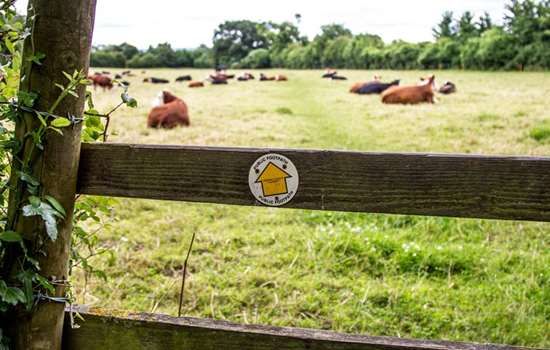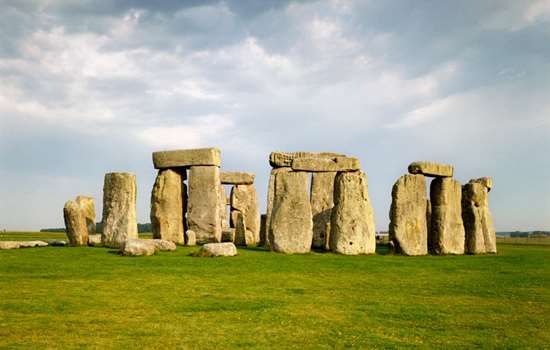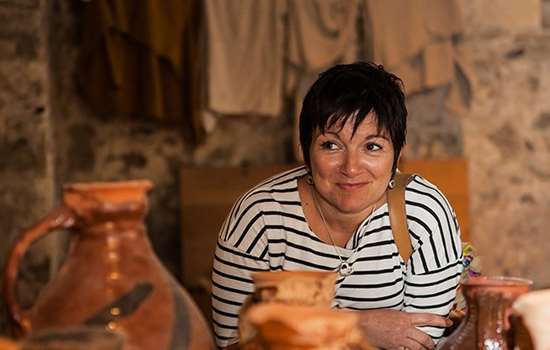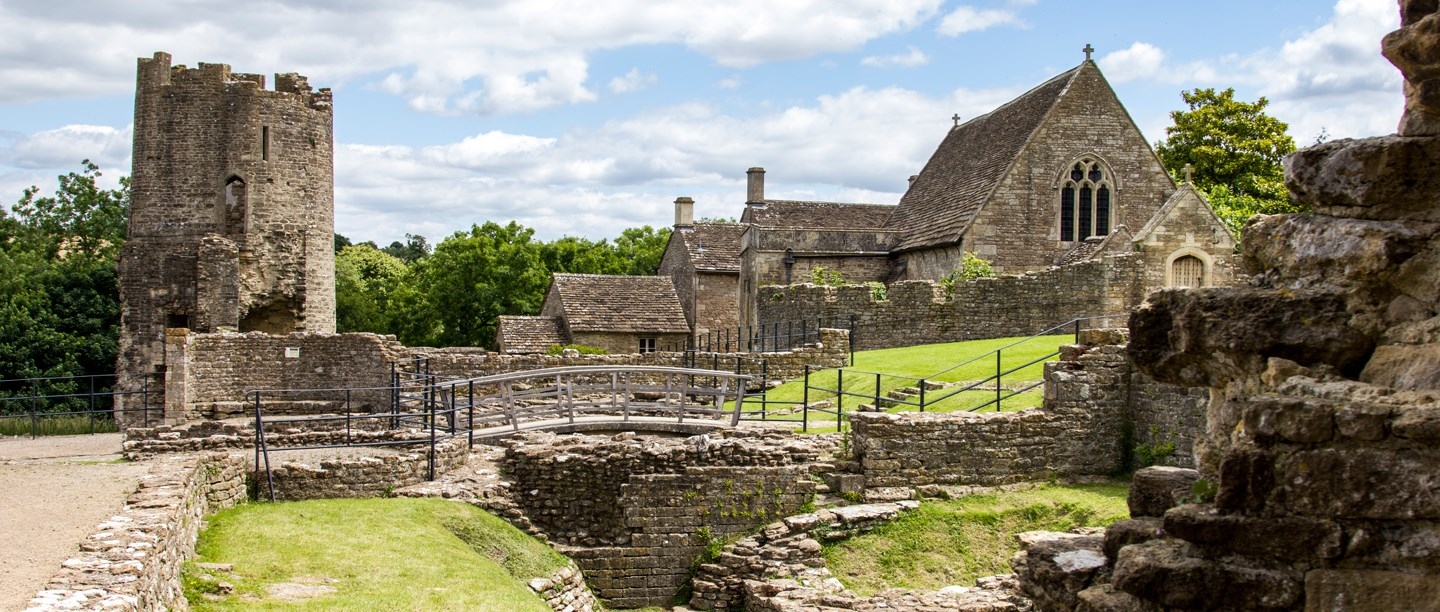Why We Love Farleigh Hungerford
"I think my favourite thing is the chapel and the garden, I think it's a gem. The garden's like a little oasis and it's got some really interesting plants, it's got quince, and figs, beautiful roses. The chapel's lovely, especially in the morning and the evening when the light shines through the glass." Amanda Crowest, Manager of Farleigh Hungerford Castle
"It's a perfect Sunday afternoon trip out for the family. It's a great place to sit and have a picnic on the grass, take in the atmosphere and the lovely views across the valley." Julie Smith, Visitor
"Since I've been working at Farleigh Hungerford Castle, I've really enjoyed looking at the castle walls and piecing together the different phases of construction. Like the visitors, I'm learning each time I come here." Frances Russell, Historic Properties Steward at Farleigh Hungerford
Plan your visitTake a Closer Look: George and the Dragon
A figure of St George slaying the dragon dates dominates the chapel's east wall. Because of the style of armour St George is wearing, we can date it to the 1440s. It was almost certainly commissioned by Walter, first Lord Hungerford, who was made a knight of the Order of the Garter in 1421. The Order of the Garter was - and still is - England's highest honour.
The painting of St George was rediscovered in 1844, along with a smaller figure of a kneeling knight wearing the Hungerford arms. But early efforts at conserving them probably did more harm than good. They were treated with hot wax between 1931 and 1955, which caused its pale background to turn red.
What Makes Farleigh Hungerford Special?
The Hungerford family came to Farleigh in the late 14th century, and it's their stories that make Farleigh Hungerford so special.
Sir Thomas Hungerford, the first Hungerford at Farleigh, was also the first ever Speaker of the House of Commons. For the next 300 years his descendants were caught up in some of England's most important events - and some of its most shocking scandals.
You can learn about them on the free audio tour as you explore the ruins of the towers, moat, walls, and kitchens. There's also an exhibition about the castle's history in the Priest's House and a chance to come face to face with some Hungerfords in the chapel and in the crypt.
More HistoryThen and Now
Three Grisly things to look out for
- The Body in the Oven: Sir Edward Hungerford's second wife, Agnes Cottell, was a widow - but only because she murdered her first husband, who may have been Edward's steward. Trial records state that 'the body…(was) put into a certain fire in the furnace of the kitchen in the castle of Farley…and did burn and consume'. After Sir Edward died in 1522, Agnes and her two accomplices were tried, found guilty, and hanged. You can see the remains of the kitchens in the north-west corner of the castle.
- The Lady in the Tower: Sir Edward's son, Lord Walter, kept his wife Elizabeth locked in a tower. She wrote in 1539 that she was 'continually locked in one of my Lord's towers in his castle…these three or four years past…under the custody of my Lord's Chaplain, which has once or twice hereforeto poisoned me'. She claimed that she'd been reduced to drinking her own urine, and that without help from local women who brought food and drink to her windows, she would have starved to death. Tradition holds that her prison was in the Lady Tower, but it's more likely that she was held in the now-ruined north-west tower.
- The Coffins with Faces: There are eight human-shaped lead coffins in a crypt under the chapel. These rare survivals contain the remains of Sir Edward Hungerford III and the family of his successor, Sir Edward IV, and date from the second half of the 17th century. Incredible, 19th century tourists are reported to have drilled holes through the lead and used straws to get a taste of the embalming fluid.
More to Explore
-

Hike through History
Visit Farleigh Hungerford on a beautiful walk from the historic market town of Bradford on Avon.
-

Visit Stonehenge
Stonehenge is one of the world's most famous prehistoric sites - and it's only a 40 minute drive away from Farleigh Hungerford.
-

More Spotlights On
Find out more about some of our favourite historic places in England.
-

Members get More
Enjoy unlimited days out for a whole year, plus free or discounted entry to a range of events. From just £43.
